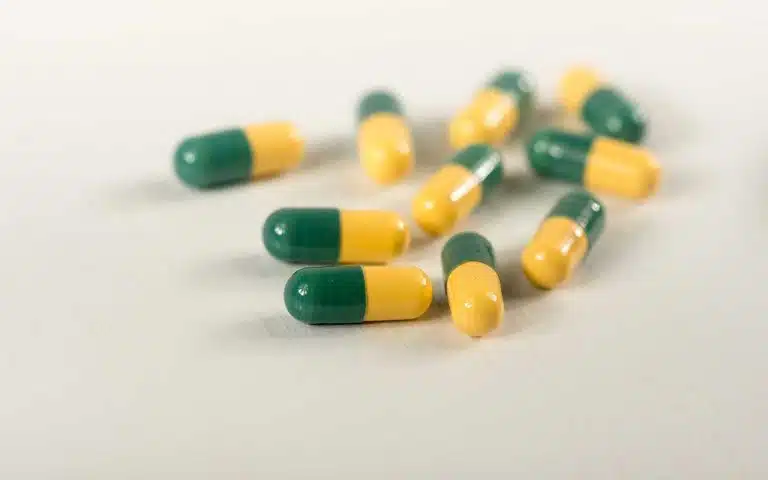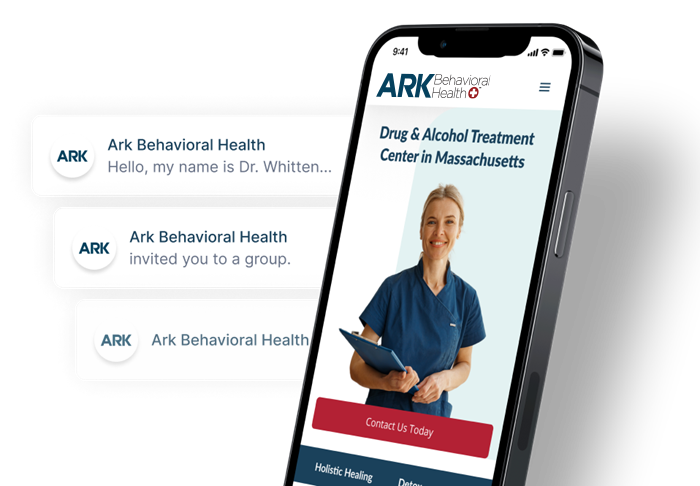Tramadol Addiction | Symptoms, Withdrawal, & Treatment
- What Is Tramadol Prescribed For?
- Signs Of Tramadol Addiction
- Side Effects Of Tramadol Abuse
- Tramadol Withdrawal Symptoms
- Tramadol Addiction Treatment
- FAQs

Tramadol is an analgesic synthetic opioid medication used to relieve moderate to severe chronic pain. It works in the central nervous system to alter how the body responds to pain.
The side effects of long-term tramadol use can lead to addiction and withdrawal. If you or a loved one live with opioid addiction, professional treatment options are available.
What Is Tramadol Prescribed For?
Tramadol is a prescription opioid painkiller prescribed under the brand names:
- Ultram
- Ultram ER
- ConZip
- Ultracet (in combination with acetaminophen)
It works like other severe pain medications, like oxycodone and hydrocodone, by binding to opioid receptors in your brain and blocking pain signals. Tramadol can also increase the effects of serotonin and norepinephrine, hormones involved in pain perception.
While the opioid content of tramadol may be less than other prescription drugs, because it’s derived from the opiate codeine, it’s highly addictive and can result in tramadol dependence.
Is Tramadol A Controlled Substance?
Tramadol is considered a schedule IV controlled substance by the FDA due to its addictive qualities. Schedule IV drugs have a lower risk of dependency but can still be addictive.
To learn more read Tramadol Drug Classification | Is Tramadol A Controlled Substance?
Signs Of Tramadol Addiction
There are a number of different signs that someone is addicted to tramadol. The most common signs of opioid addiction include:
- visiting multiple doctors to obtain more tramadol
- compulsive use of tramadol
- neglecting responsibilities at home, work, or school
- social problems related to tramadol use
- mood swings
- excessive drowsiness
- using tramadol without a prescription
- difficulty concentrating
- apathy
- impaired coordination
- taking high doses to experience the same effects
- hiding or leaving around empty prescription bottles
- spending large amounts of money on tramadol
- continuing to use tramadol despite negative effects
Side Effects Of Tramadol Abuse
Abusing tramadol can lead to adverse side effects. The severity of these side effects depends on a variety of factors like your body composition, how well your organs function, and other substances you may be using.
Side effects of tramadol may include:
- nausea and vomiting
- confusion
- depression and anxiety
- pinpoint pupils
- respiratory depression
- changes in appetite
- drowsiness
- slurred speech
- headaches
- impaired coordination
- constipation
- fever
- trouble concentrating
- muscle aches
- sweating
- seizures
- serotonin syndrome
- low blood pressure
Learn more about Tramadol Side Effects & warnings
Tramadol Withdrawal Symptoms
Withdrawal from tramadol usually lasts anywhere from 5-7 days and can be just as harsh as the side effects of abuse. Those who take higher doses of the drug and for longer periods of time may have a longer period of withdrawal.
Common withdrawal symptoms may include:
- depression
- aggression
- diarrhea
- insomnia
- stomach cramps
- muscle aches
- nausea
- vomiting
- restlessness
- fatigue
- tremors
- sweating
More severe symptoms of withdrawal can include:
- numbness and tingling
- seizures
- confusion
- extreme anxiety
- hallucinations
- panic attacks
- paranoia
While craving tramadol is considered a sign of psychological dependence, the development of tolerance for tramadol, and the withdrawal symptoms of not taking it, are considered signs of physical dependence and potentially addiction.
Learn more about Tramadol Withdrawal
Tramadol Addiction Treatment
Treatment options for tramadol addiction include medical support for the physical symptoms of withdrawal and therapy for behavioral or cognitive issues.
Medical Detox
Because the side effects of withdrawal can be so harsh, it’s best to not stop using tramadol “cold turkey.”
Having a doctor or other medical professional help you through the initial detox phase, either with inpatient or outpatient care, can ensure that if any severe withdrawal symptoms come up, they’re dealt with immediately.
A medical professional can also provide medication like antidepressants or benzodiazepines to help manage some of the more serious withdrawal symptoms. Withdrawal can take several days or several weeks.
Behavioral Therapy
Therapy is just as important a form of drug addiction treatment as getting the drug out of your system. With the help of a therapist, a person with a substance abuse issue can have help recognizing harmful thoughts and behaviors they have and work to change them.
Some therapies that work for those struggling with opioid addiction include:
- cognitive behavioral therapy
- motivational interviewing
- family therapy
- peer support group participation
- exercise, nutrition, and other supportive treatments
If you’re looking for treatment for yourself or a loved one addicted, there are a number of different treatment programs available. Please call our helpline today to learn more about how we address tramadol addiction at our treatment facilities.
Frequently Asked Questions About Tramadol
How Much Does Tramadol Cost On The Street?
On the street, a 50mg tramadol pill usually costs about $1, while a 100mg pill costs about $5. These prices may be higher in places with a low supply of tramadol and lower in places with a high supply of tramadol.
Learn more about Tramadol Street Prices
What Substances Interact With Tramadol?
Tramadol is known to interact with opioids, benzodiazepines, alcohol, antidepressants, dextromethorphan, St. John’s Wort, and others.
Learn more about Tramadol Interactions
Can You Take Tramadol While Breastfeeding?
Women should avoid using tramadol while breastfeeding. Some women will process the drug too quickly and could potentially harm their child through opioid overdose by way of their breast milk.
Learn more about using Tramadol While Breastfeeding
Does Tramadol Get You High?
Tramadol can make you feel relaxed and euphoric, or “high,” especially if you abuse it (use it in a manner not prescribed by your doctor).
Tramadol abuse poses serious health risks, including serotonin syndrome, overdose, and addiction.
Learn more about the risks of Recreational Tramadol Abuse
Can You Snort Tramadol?
Tramadol is the generic prescription drug for Ultram. It is an opioid that, when crushed, can be snorted. However, snorting this narcotic can cause dependence and is recognized as substance abuse.
Learn more about Snorting Tramadol
Does Tramadol Need To Be Tapered Off?
Yes. Tapering, or gradually reducing your dose of tramadol instead of quitting cold turkey, helps you avoid withdrawal symptoms like anxiety, nausea, diarrhea, and uncontrollable shaking.
Talk to your doctor before you try tapering off tramadol. They can design a personalized tapering schedule to meet your needs. They may also recommend that you attend a medical detox program, where you’ll receive 24/7 care and monitoring as you get the drug out of your system.
Learn more about how to Taper Off Tramadol
Is Tramadol Addictive?
Yes, in some cases. Though when used as prescribed tramadol is considered to have a lower potential for drug addiction than other opioid drugs.
Note that even when tramadol is used properly, some degree of physical dependence may develop, resulting in withdrawal symptoms if and when you stop taking the drug.
To learn more, read Is Tramadol Addictive?
Is It Illegal To Buy Tramadol Online?
Purchasing tramadol online without a valid prescription is both illegal and risky.
In the United States, tramadol is a controlled substance that is only available with a medical prescription. While some legitimate pharmacies do offer online sales, a valid prescription is still required for the transaction to be considered legal.
Learn more about Buying Tramadol Online without a prescription
Can You Overdose On Tramadol?
Yes, you can overdose on tramadol if you take high doses or mix it with other central nervous system depressants like alcohol, benzodiazepines, or other opioids. Symptoms of opioid overdose include slowed breathing, extreme drowsiness, and cold or clammy skin.
Learn more about Tramadol Overdose
How Long Does Tramadol Stay In Your System?
Tramadol may stay in your system for an average of 30 to 42 hours. A number of factors may affect this timeframe, including your history of health conditions and drug use. Drug tests can detect tramadol anywhere between hours to 90 days after your last dose.
To learn more, read How Long Does Tramadol Stay In Your System?
Is Long-Term Tramadol Use Safe?
Tramadol is linked to many serious side effects when abused long-term, including bone fractures, chronic constipation, drug tolerance, and increased risk of overdose. It can also lead to serotonin syndrome in the long term, especially when taken with other drugs.
Learn more about Long-Term Tramadol Abuse
Can You Inject Tramadol?
Tramadol is sometimes abused by crushing the tablets into a powder that is dissolved into a liquid to be injected intravenously (IV).
Injecting tramadol directly into the bloodstream produces more intense effects and can cause dangerous consequences. Injecting tramadol can cause long-term health effects, infections, overdose, and addiction.
Learn more about Injecting Tramadol
Can You Drink While On Tramadol?
Mixing alcohol with tramadol is not recommended because they are both central nervous system depressants. Both tramadol and alcohol slow breathing and other essential functions in the brain and body.
Taking too much tramadol or mixing it with other CNS depressants, like alcohol, can enhance these effects. This can result in a life-threatening overdose, coma, or brain damage.
Learn more about Mixing Tramadol & Alcohol
Can You Mix Tramadol & Marijuana?
Tramadol and marijuana can be mixed, but it is dangerous and not recommended. The side effects caused by tramadol and marijuana build off one another and can cause heightened central nervous system (CNS) depression, cognitive problems, and more.
Learn more about Mixing Weed & Tramadol
What Does Tramadol Look Like?
Tramadol tablets are offered in several shapes such as round and oval. These tablets come in a white or off-white color, and the imprint on the tablets corresponds to the strength of the pill.
Learn more about What Tramadol Looks Like
Written by Ark Behavioral Health Editorial Team
©2024 Ark National Holdings, LLC. | All Rights Reserved.
This page does not provide medical advice.
Clinical Pharmacokinetics - Pharmacology and side effects of tramadol
FDA - Controlled substance classification abuse, and withdrawal symptoms
National Library of Medicine: MedlinePlus - Tramadol

Questions About Treatment?
Ark Behavioral Health offers 100% confidential substance abuse assessment and treatment placement tailored to your individual needs. Achieve long-term recovery.
100% confidential. We respect your privacy.
Prefer Texting?
Our friendly support team is here to chat 24/7. Opt out any time.







 Learn More
Learn More








